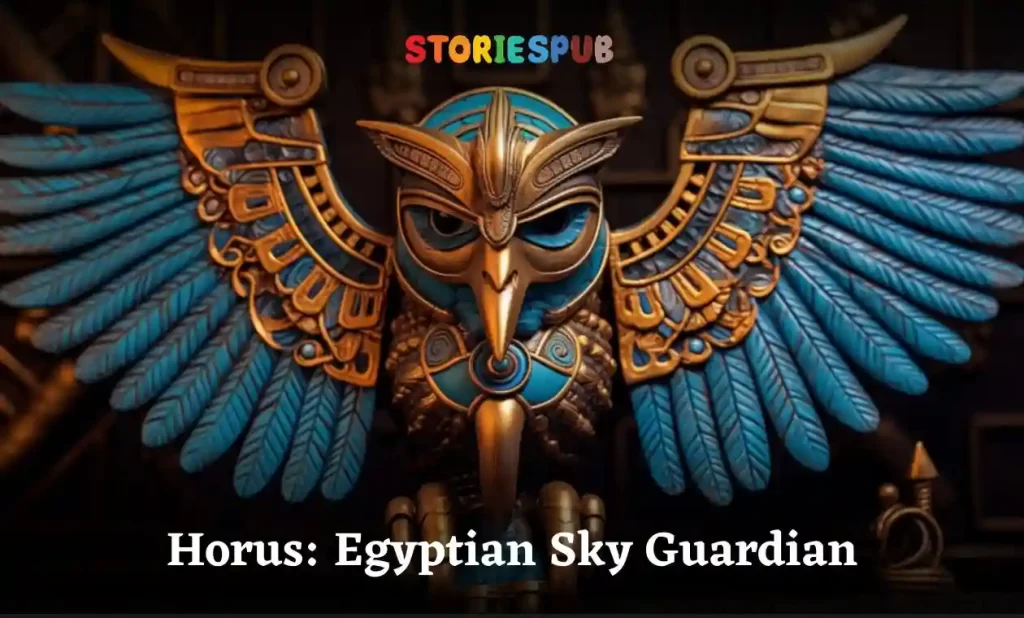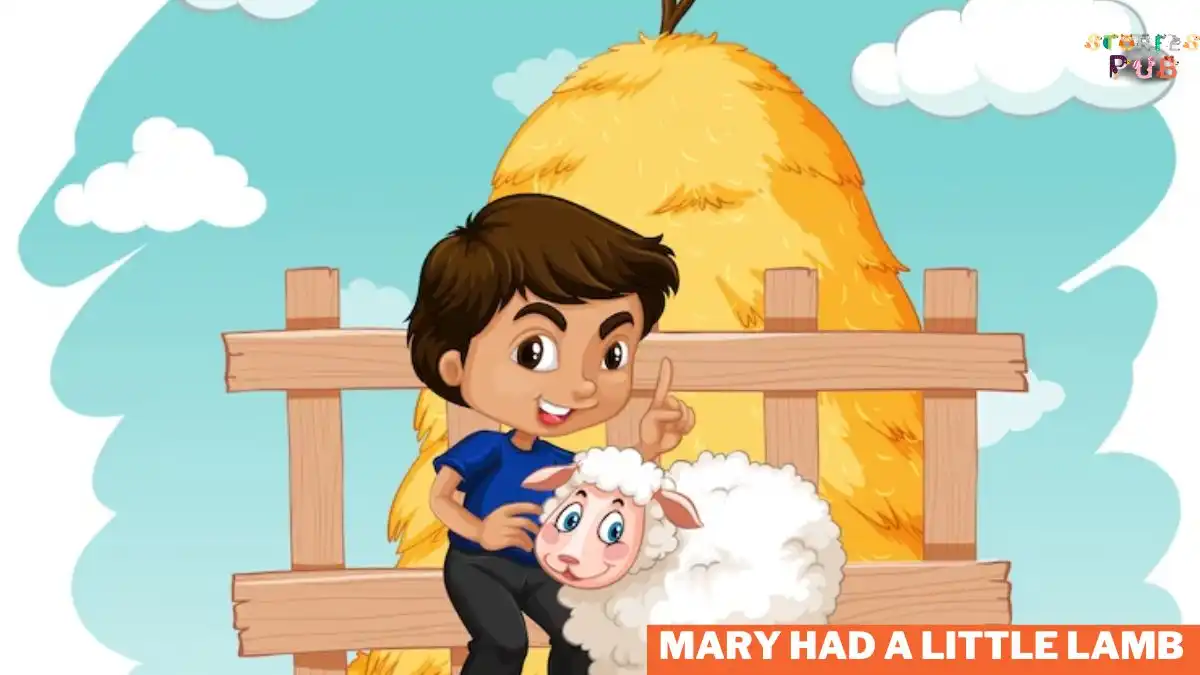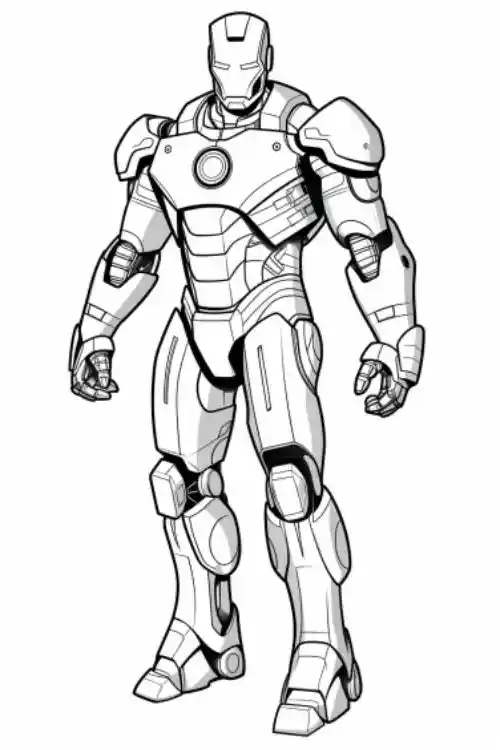Falcon God Horus: Protector & Ruler of the Egyptian Skies

The Divine Horus – Protector of Pharaohs
Egyptian mythology is one of the richest in the world, filled with stories and characters that have captivated people for centuries. Amongst the many gods and goddesses revered in ancient Egypt, Horus stands out as one of the most important.
He was a god of the sky and symbolized both kingship and divine protection over pharaohs. In this article, we will explore Horus’ story – from his origins to his legacy – delving into why he’s still relevant even today.
Horology
Horus was considered one of the oldest deities in ancient Egyptian mythology, dating back to pre-dynastic times. He was believed to be a celestial deity, associated with the heavens and personifying light itself. His importance grew over time as he became more closely aligned with kingship and pharaonic power.
In early myths, Horus was seen as a god who fought against chaos and evil forces threatening order in society. As such, he played an important role in protecting pharaohs from harm by warding off malevolent spirits or demons that could harm them or their kingdom.
Birth and Parentage
The story of Horus’ birth is an essential part of his mythology. According to legend, his parents were Osiris (god of fertility) and Isis (goddess of motherhood). After Osiris was murdered by Set (god of chaos), Isis went on a quest to find her husband’s body parts so that she could resurrect him.
With her magic powers, Isis managed to reassemble Osiris’ body aside from his phallus which had been thrown into Nile river where it was eaten by a fish known as Oxyrhynchus or “sharp-nosed fish”. She then magically healed him back into life long enough for them to conceive a child – Horus.
The Falcon God
Horus was often depicted as a falcon-headed god, with the body of a man and the wings of a bird. This imagery had significant meaning to the ancient Egyptians, who viewed falcons as powerful birds that could fly higher than any other creature. They were symbols of speed, agility, and cunning – traits that Horus embodied in his role as protector of pharaohs.
Moreover, Horus was also associated with the sun and had close ties to Ra (the sun god) due to his sky-related aspects. He was believed to be responsible for ensuring the sun’s safe passage through the sky each day, which further underscored his crucial role in Egyptian mythology.
Horus and Pharaohs
As a protector deity tied to kingship, Horus played an important part in Egyptian political life. Pharaohs were believed to be incarnations of him and so he became an integral part of their rule.
When a new pharaoh ascended to the throne, they would often take on a new name that included references to Horus – such as “Horus Strong Bull” or “Horus Golden Falcon.” Furthermore, temples dedicated to Horus were built throughout Egypt where his followers could worship him and invoke his protection over their lives.
It is clear that Horus played a significant role in ancient Egyptian religion and society alike, reflecting both their reverence for nature’s power and their understanding of how it could be harnessed for their benefit. It is evident that Horus holds an essential place in ancient Egyptian mythology- representing both kingship and divine protection over pharaohs.
His story has captivated people for centuries with its rich history rooted in pre-dynastic times when he was considered one of the oldest deities known at the time till becoming more closely aligned with pharaonic power. Horus’ importance grew over time, and he remains relevant even today, as evidenced by his continued presence in modern media and popular culture.
Origins and Family
Horus is the son of Osiris, the god of fertility and agriculture, and Isis, the goddess of magic and motherhood. The story goes that Osiris was killed by his own brother Set, the god of chaos, who was jealous of his power.
Isis mourned for Osiris and used her magical powers to bring him back to life temporarily so she could conceive Horus. Horus’ birth was seen as a symbol of hope for Egypt because it represented the triumph over chaos.
According to legend, Horus was born in a papyrus thicket on the banks of the Nile River. His mother Isis kept him hidden from Set until he was old enough to challenge his uncle for control over Egypt.
As a child, Horus had many adventures and battles with Set. One story tells how Set stole one of Horus’ eyes during a fight.
This eye became known as the Eye of Horus, which represents healing and protection in ancient Egyptian culture. Despite being a child at the time, Horus proved himself to be brave and resourceful in battle against Set.
He used his intelligence and innate cunning to outsmart his uncle on multiple occasions. However, their final battle ended in a stalemate that required intervention from other gods before peace could be restored.
The Roles of Osiris and Isis in Egyptian Mythology
Osiris was an important god in ancient Egyptian mythology because he represented fertility and renewal through agriculture. He was also seen as a judge who presided over the afterlife along with Anubis. According to legend, after he died at the hands of his brother Set, he became ruler of the underworld where he judged souls who appeared before him.
Isis was another important figure in Egyptian mythology because she represented femininity through motherhood but also had magical powers that allowed her to control nature itself – including bringing her husband back to life. She was considered the patron goddess of women, children, and magic.
Horus’ Birth and Childhood
According to legend, Horus was born after his mother Isis used her magical powers to bring his father Osiris back to life temporarily. She conceived Horus during this time.
As a child, Horus was raised in secret by his mother until he was old enough to challenge Set for control over Egypt. He had many adventures and battles with Set along the way, including the loss of one of his eyes which became known as the Eye of Horus.
Despite being young at the time, Horus proved himself to be brave and cunning in battle against Set. He ultimately rose above all adversity and became one of the most important gods in ancient Egyptian mythology.
Horus’ Battles with Set
According to legend, there were many battles between Horus and Set over who would control Egypt. In one story, they fought each other using boats made out of papyrus reeds that were powered by magic spells. In another story, they had a race on foot where Horus cheated by transforming into a hippopotamus halfway through the race.
However, their most famous battle came towards the end of their feud when they finally met in combat that lasted for many days without either gaining an advantage over the other. Eventually, other gods intervened so peace could be restored between them.
The Eye of Horus
One interesting aspect about Horus is that he lost one of his eyes during a fight with Set. This eye became known as the Eye of Horus and it represents healing and protection in ancient Egyptian culture – particularly against evil forces like Set.
The eye itself has six parts that represent different aspects such as smell or taste while also making up a fraction system used by Egyptians for mathematics. The Eye is also associated with several goddesses such as Wadjet and Bastet who embody the protective powers of Horus.
Depictions and Symbols
The Falcon Head of Horus
One of the most striking depictions of Horus is his falcon head, which was used to represent his connection to the sky and his ability to soar above the earth. In ancient Egyptian art, he is often shown with a human body and a falcon’s head, wearing a crown or headdress adorned with symbols of power. The image of Horus as a falcon also symbolized his speed, agility, and keen vision – qualities that were associated with pharaohs as well.
The Eye of Horus
Another important symbol associated with Horus is the Eye of Horus, which is sometimes called the Wedjat eye. The Eye of Horus was believed to have healing powers and was used in medicine and magic throughout ancient Egypt. It was also thought to represent different aspects of Horus’ power and influence – for example, the right eye was associated with Ra, while the left eye was linked to Thoth.
The Scepter and Flail
In addition to his falcon head and the Eye of Horus, other symbols were also used to represent different aspects of Horus’ power. One such symbol was the scepter or staff that he held in one hand – this represented his authority over pharaohs and other mortals. Another symbol was the flail or whip that he sometimes carried in his other hand – this represented his ability to punish those who opposed him or threatened Egypt’s stability.
Horus on Thrones
Horus is also frequently depicted seated on a throne or wearing an elaborate crown. These images reinforce his status as king or ruler among gods as well as mortals.
In some cases, images show him holding both crook & flail alongside representing authority over life & death. These depictions often also showed him with a sun disk above his head, emphasizing his connection to Ra, the sun god.
How Symbols were Used to Represent Different Aspects of Horus’ Power and Influence
Each symbol associated with Horus had its own meaning and significance. For example, the falcon head represented his ability to soar above the earth and watch over his followers.
The Eye of Horus represented healing power as well as different aspects of his power depending on which eye was being depicted. The scepter and flail represented authority and punishment respectively.
These symbols were used in various forms of art as well as in religious ceremonies to represent different aspects of Horus’ power and influence over Egypt. They allowed people to connect with him and understand his importance both within Egyptian mythology and practical life.
Role in Ancient Egypt
Temples and Worship
Horus was one of the most important gods in ancient Egyptian society, and as such, he was worshipped throughout the country. There were numerous temples dedicated to him in various cities, each with their own unique rituals and traditions. One of the most famous of these temples was the Temple of Horus at Edfu, which is considered one of the best-preserved temples from ancient Egypt.
Worship of Horus usually involved offerings of food and drink, as well as elaborate ceremonies that often included music and dance. Priests would perform daily rituals to ensure that Horus remained pleased with his followers.
Incarnation as Pharaoh
In addition to being worshipped by ordinary Egyptians, Horus played a crucial role in the lives of pharaohs. According to Egyptian mythology, each pharaoh was believed to be an incarnation of Horus during their lifetime. As such, they were seen as having a divine right to rule over Egypt.
The pharaoh’s connection to Horus was so strong that even their royal names often included references to him. For example, Tutankhamun’s name translates to “Living Image of Amun”, with Amun being another important god who was often associated with Horus.
Importance in Pharaoh’s Rule
The fact that pharaohs were believed to be incarnations of Horus meant that he played a crucial role in their rule over Egypt. It was believed that if a pharaoh failed to maintain his connection with Horus or disrespected him in any way, it could lead to disaster for both the ruler and the people under his command.
As such, many aspects of Egyptian society revolved around maintaining this connection between pharaohs and their divine patron. This included everything from building temples dedicated to Horus to ensuring that the pharaoh’s mummification process reflected his connection to the god.
Symbolism in Art and Architecture
The importance of Horus in Egyptian society is also reflected in their art and architecture. For example, many temples dedicated to him feature elaborate carvings and paintings depicting his various exploits.
These would have served as both a way of reminding people of his power and influence, as well as a way of reinforcing the connection between pharaohs and their divine patron. In addition to these depictions, Horus was also represented through various symbols.
One of the most famous of these is the Eye of Horus, which was believed to represent both his power and protection. The symbol was often used in amulets worn by ordinary Egyptians, as well as on statues and other objects associated with Horus.
Legacy and Influence
The Worship of Horus
Despite the decline of ancient Egypt, the worship of Horus continued to be maintained in various forms throughout the centuries. Horus had become an integral part of Egyptian mythology and religion, and his influence didn’t fade away easily. The continuity was observed through changes in religious practices as society evolved.
One interesting example is how ancient Egyptians believed that Horus had a physical presence in his temple, which meant that he needed to be fed and cared for by priests. Today, the temples are no longer functioning; however, people still visit them as tourist attractions to learn more about the ancient civilization that worshipped him.
In addition to this, some modern-day practitioners have incorporated elements of ancient Egyptian religion into their belief systems. Some individuals who identify as Kemetic (a term used to describe people who follow traditional Egyptian spirituality) continue to honor Horus as a god.
Horus in Modern Media
Horus has also made an appearance in modern media such as movies, comics, and video games. One popular example is the animated movie “The Prince of Egypt,” which portrays Horus as a powerful deity who helps Moses free the Israelites from slavery in Egypt.
Comic book fans may also recognize him from Marvel Comics’ “Thor” series where Thor battles against various gods including Horus. Similarly, video game enthusiasts may recognize him from titles like “Assassin’s Creed Origins,” where he is depicted as a revered and powerful god with immense abilities.
However, it’s important to note that these portrayals are not always accurate representations of how Horus was worshipped or perceived by ancient Egyptians. Nonetheless, they contribute significantly towards keeping his legacy alive by raising awareness about him among modern audiences.
Conclusion
As one of the most significant deities in ancient Egyptian religion and mythology, Horus has left a lasting legacy even after the decline of ancient Egypt. Horus’ continued worship demonstrated the influence he had on the people of that time and continues to inspire people, centuries later.
Horus’ importance in ancient Egyptian culture is evident in modern media as well. Despite inaccuracies in some depictions, he serves as a reminder of the rich history, traditions, and beliefs that persist to this day.
The worship of Horus also highlights how certain aspects of ancient religions can continue to be cherished despite evolving societal norms. As such, it’s important to maintain an awareness and appreciation for these practices, as they contribute significantly towards preserving our collective cultural heritage.
Conclusion
After exploring the life and legacy of Horus, it is clear that he was one of the most important gods in ancient Egyptian mythology. As the god of the sky, he was believed to be a powerful protector of pharaohs and was worshipped throughout the country. His battles with Set, the god of chaos, made him an important symbol of order and stability.
Horus was also a complex figure, with many different aspects to his personality and power. He was depicted in many different ways in ancient Egyptian art, each symbolizing a different aspect of his influence.
These symbols have continued to be used throughout history, from amulets used for protection to modern media such as movies. One particularly interesting aspect of Horus is his connection with pharaohs.
In ancient Egypt, pharaohs were believed to be incarnations of Horus on earth. This gave them great power and influence over their subjects but also made them responsible for upholding order and justice.
Despite the decline of ancient Egypt, Horus continued to be worshipped by many people throughout history. His symbols have been adopted by other cultures as well, showing how universal his appeal has been.
Overall, studying Horus provides us with a fascinating look into one culture’s beliefs about divinity and power. It reminds us that even though our beliefs may differ today, there is still much we can learn from ancient cultures like Egypt.
Hey kids, how much did you like Falcon God Horus: Protector & Ruler of the Egyptian Skies ? Please share your view in the comment box. Also, please share this story with your friends on social media so they can also enjoy it, and for more such Egyptian Mythology, please bookmark storiespub.com.
Related Post :
Horus FAQ
Who is Horus in Egyptian mythology?
Horus is the ancient Egyptian god of the sky, kingship, and protection. He is often depicted as a falcon or a man with a falcon's head, wearing a double crown or the Eye of Horus.
Who are Horus's parents?
Horus is the son of Osiris, the god of the afterlife, and Isis, the goddess of fertility and motherhood. His parents play a central role in the myth of Osiris's death and resurrection.
How is Horus connected to the story of Isis and Osiris?
After Osiris's murder by his brother Set, Isis conceives Horus with the help of her magical powers. She raises him in secret to protect him from Set, and when Horus comes of age, he battles Set to avenge his father's death and claim the throne of Egypt.
What is the significance of the Eye of Horus?
The Eye of Horus is an ancient Egyptian symbol of protection, healing, and restoration. In the myth, Horus loses his eye during the battle with Set, but the eye is later restored by the god Thoth. The Eye of Horus represents the power of healing and protection from harm.
How is Horus related to the concept of kingship in ancient Egypt?
Horus was considered the divine embodiment of the pharaoh, symbolizing the pharaoh's role as the protector and ruler of Egypt. The pharaoh was often referred to as the "living Horus," emphasizing their divine connection and legitimacy.
What is the difference between Horus the Elder and Horus the Younger?
Horus the Elder is an ancient sky god, sometimes considered the brother of Isis, Osiris, Set, and Nephthys. Horus the Younger, also known as Harpocrates, is the son of Isis and Osiris and is associated with the myth of Osiris's death and resurrection. The two deities are often conflated in Egyptian mythology.
How was Horus worshiped in ancient Egypt?
Horus was worshiped through prayers, offerings, and rituals in temples dedicated to him. Major cult centers included Edfu, where the Temple of Horus still stands, and Behdet, where he was worshiped as a solar deity.
Were there any festivals dedicated to Horus?
Yes, ancient Egyptians celebrated the "Festival of Victory," commemorating Horus's triumph over Set. The festival featured a ritual reenactment of the battle between the two gods, symbolizing the ongoing struggle between order and chaos.
How is Horus depicted in ancient Egyptian art?
In ancient Egyptian art, Horus is typically shown as a falcon or a man with a falcon's head, wearing a double crown or the Eye of Horus. He is also sometimes depicted as a falcon protecting the pharaoh or as a child sitting on his mother Isis's lap.
How has Horus's image and symbolism endured over time?
Horus's image and symbolism have endured through the centuries, making him one of the most recognizable figures in ancient Egyptian mythology. Today, the Eye of Horus is still used as a symbol of protection and is often referenced in modern culture, art, and literature.



















